CTBUH 2021 International Conference at Shenzhen
14 November 2021
CTBUH 2021 International Conference Shenzhen—The Future City: Addressing Carbon, Climate, and Societal Crises—was held on 11 November in the Sky Concert Hall at One Shenzhen Bay Tower 7. The concert hall was confirmed by CTBUH as the "World's Highest Concert Hall" in 2019.
This global conference brought together hundreds of delegates from top companies. The conference focused on the major challenges high-rise buildings will face in future urban construction. Presentations focused on carbon emissions from high-rise buildings, social equity in the built environment, the built environment’s impact on human health, resilient building, and urban resilience under climate change. These topics were explored both globally and regionally through numerous presentations and discussions.
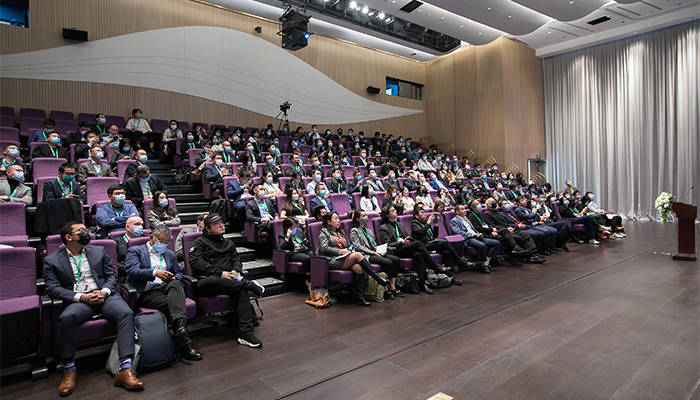
Opening Address
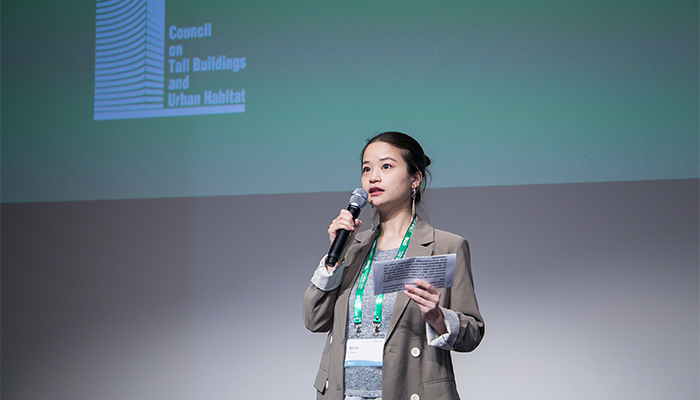
The conference was hosted by Jiaqi Qu, the Associate Director of CTBUH’s Shanghai headquarters. Jiaqi introduced the theme of this conference, which is closely related to the rapid development of high-rise buildings in China, the national carbon peak, and China’s carbon neutrality commitment. She then welcomed all the guests who were attending.
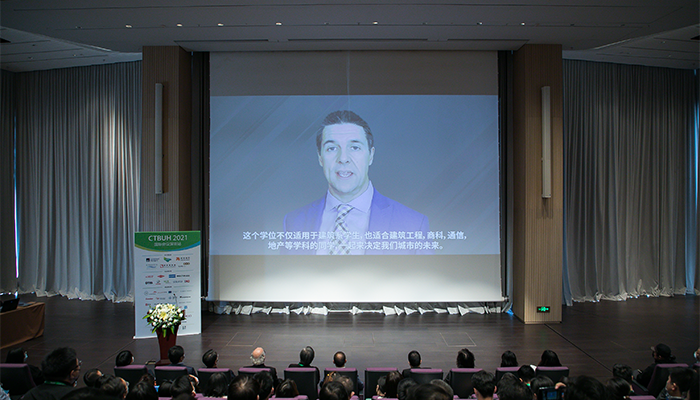
CTBUH CEO Antony Wood explained the theme of the conference through video. He emphasized background issues such as the pandemic, climate change, and social resilience. He also aimed to rethink the relationship between high-rise buildings and cities by analyzing building trends after 9/11. He finished by welcoming all the guests on behalf of CTBUH.
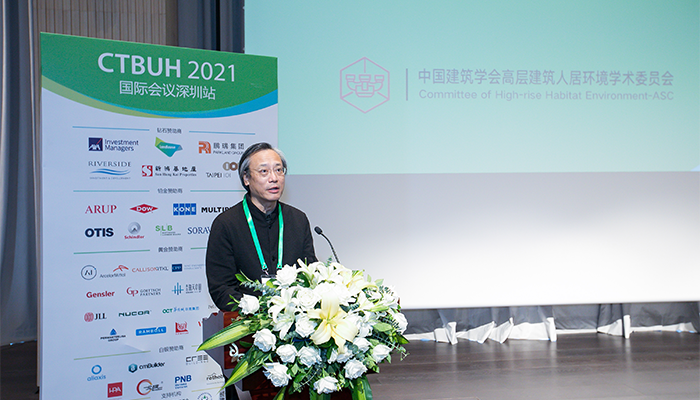
Junjie Zhang, President of East China Architectural Design & Research Institute (ECADI) and Chairman of Committee of High-Rise Habitat Environment-ASC, gave an opening speech. He explained that in terms of building energy consumption, it is necessary to consider carbon reduction throughout the building's life cycle. In addition, he emphasized the importance of accounting for the development of human needs and providing successful management when developing high-rise buildings.
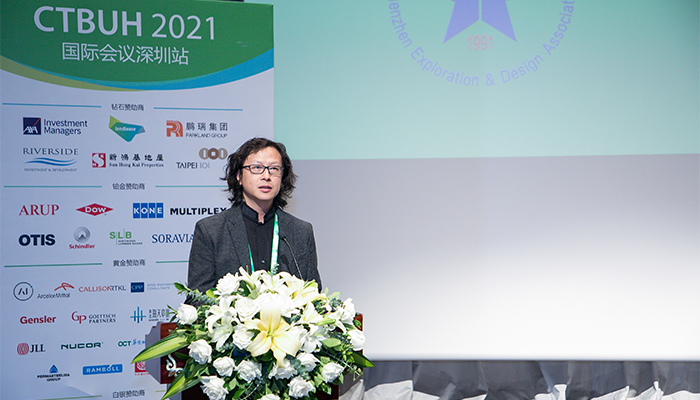
Ribiao Chen, President of Shenzhen Exploration & Design Association and General Manager of Hong Kong Huayi Design Consultants (Shenzhen), mentioned in his opening speech that high-rise buildings provide complex functions and are places where people come to gather. Under the 14th Five-Year Plan for reducing carbon emissions, guests are welcomed to discuss their thoughts on the next generation of cities.

Zhouwen Chen, Executive Director and Senior Vice-President of Shenzhen Parkland Group, explained that his company has been associated with CTBUH for a long time. As a brand for technology and art that betters people’s lives, the company focuses on low-carbon, green, and sustainable development and operates green technology. Zhouwen represented his company and welcomed all the guests.
Session 1—Humanizing High Density
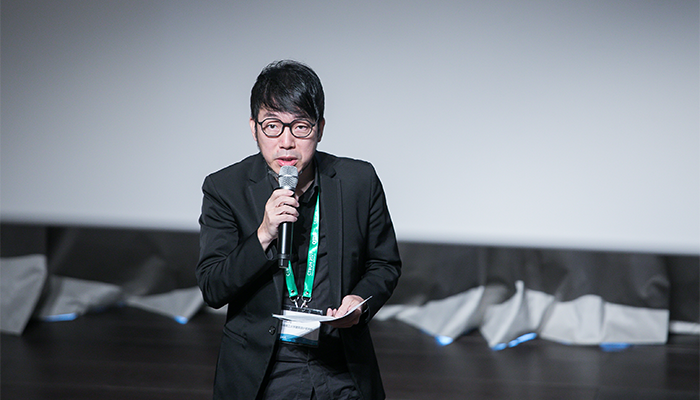
Jianhe Luo, Party Secretary and Deputy Chief Architect for the Architectural Design and Research Institute of South China University of Technology, was the chair for the “Humanizing High Density” session.

Director of Kohn Pedersen Fox Associates (KPF), Marianne Kwok, presented over live video. She shared several case studies from the KPF practice that explored carbon neutrality. She discussed standard design strategies and explained how to uplift spaces, enhance the permeability of public spaces, rationally use sunshine, and improve urban thermal comfort. Marianna also highlighted the concept of future-oriented design, ecological renewal, and sustainable development.
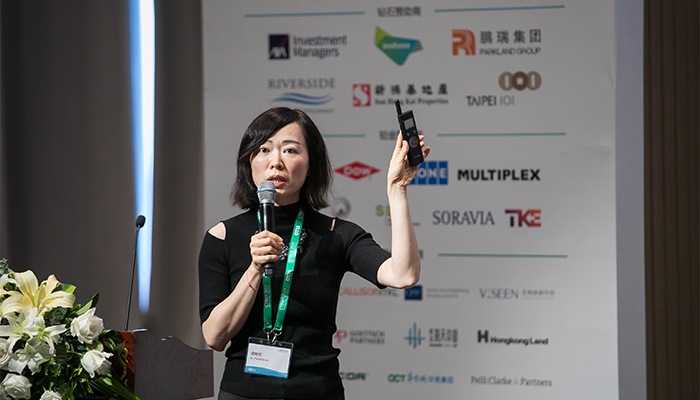
AI PlanetWorks’ Founder and CEO, David Malott, along with the co-founder and managing director, Zhizhe Yu presented on "Humanize Density Towards Livable Cities." David and Zhizhe showed various AI PlanetWorks case studies and focused on how the company creates urban environments suitable for local climate, culture, society, and history. They also explored the concept of high-rise buildings being a carrier of human density which can create a more environmentally friendly, technological, and people-oriented architecture.

May Wei, APAC Office Leader, Shanghai Office Director, and Principal of CallisonRTKL, gave a presentation titled, "Creating Happiness—The Humanistic Era of High-Density Cities." May talked about several projects including the new Shenzhen Gemdale Viseen complex and the CIMC Shenzhen Qianhai complex. She highlighted the connection between people and places through happiness, and vividly explained the five major elements of creating a happy ecosystem: meaning, vitality, happiness, freedom, and participation.
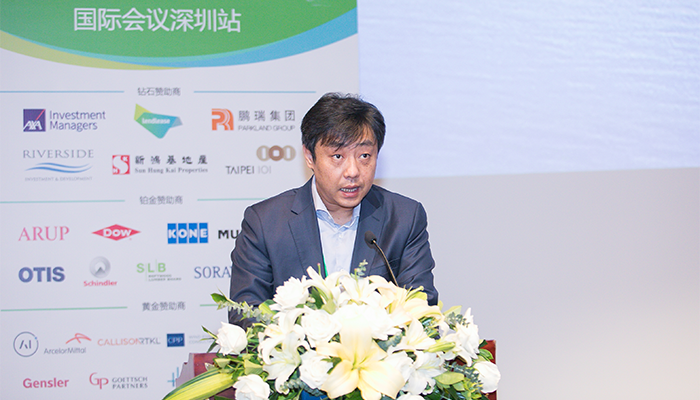
Yu Wang is the Secretary of General Party Branch and Chairman of the Board for Qingdao Conson Hai Tian Center Construction. His presentation was called, "High-Density Cities Upward—Creating Vertical Ecology in an Ultra-High State.” In this presentation, Yu questioned, "Where is the future of the city?" By explaining the ideas that went into the design and construction of Qingdao Hai Tian Center, Yu illustrated examples of how efficient operations of high-density cities can be achieved.
Session 2—Sustainability and Technology-Driven Design for Tall Buildings

The General Manger at Guangzhou Jianke Citiexpo, Lihui Xie, was session chair for the “Sustainability and Technology-Driven Design for Tall Buildings” presentations.
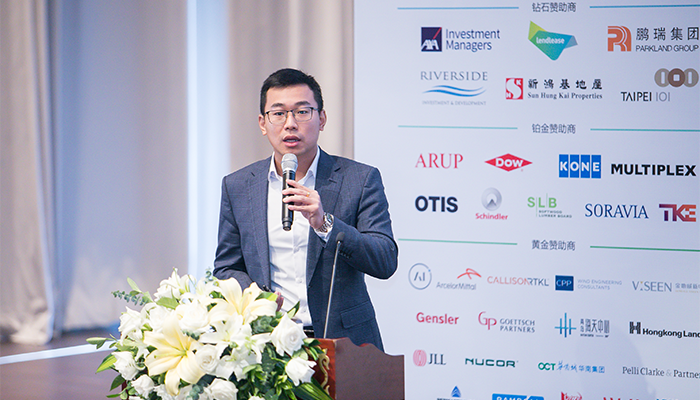
Chunlin He, the Director of China Operations for Pelli Clarke Pelli Architects, gave a presentation called, "Eco-City—Sustainable Super Tall Building Design". He described projects such as Vanke One City Office Tower, to explain the objective of sustainable development. Chunlin showed how technology can be used to balance the demands of a commercial and ecological city.

The Director of Major Projects & Strategic Accounts Management at Otis Elevator Company, Josephine Zhou’s, presentation was titled, "The Future is Here: Artificial Intelligence and Connected Systems That Enable Smart Cities." Josephine explained how her company will open up more possibilities for smart cities. Artificial intelligence technology that can predict and manage passenger flow patterns along with service robots that connect to the elevator system will enhance the elevator riding experience.
Session 3—Panel Discussion on Tall Building Renovation & Urban Renewal
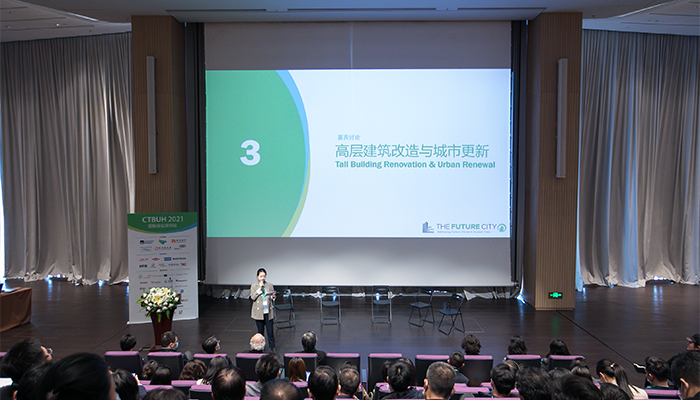
Jiaqi Qu, the Associate Director of CTBUH’s Shanghai headquarters, chaired the the third session: “Panel Discussion on Tall Building Renovation & Urban Renewal.” She expressed that in the context of rapid urbanization, new opportunities and challenges are arising for the refinement of urban renewal and the transformation of high-rise buildings.

Junjie Zhang, President of East China Architectural Design & Research Institute (ECADI) and Chairman of Committee of High-Rise Habitat Environment-ASC, proposed ways to enhance public space, create convenient and efficient transportation, and create a green, low-carbon, high-quality environment, where the old and new can coexist.
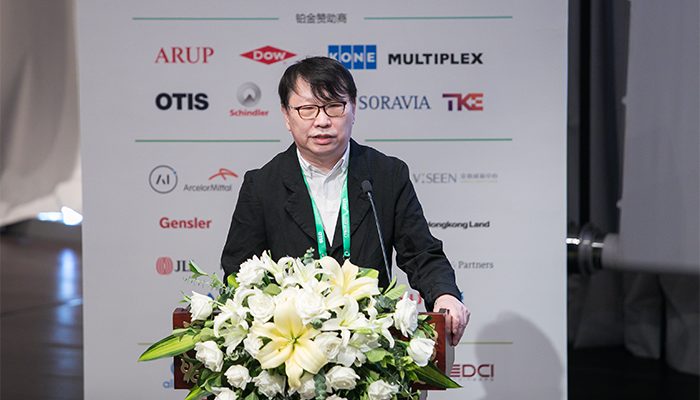
Xiangming Huang who is a Board Member and Chief Architect of TIANHUA Group, shared his views on the need for organic renewal of cities and high-rise buildings. He proposed strategies for adaptive renewal of high-rise buildings, integration with urban infrastructure, and preserving the heritage of urban culture.
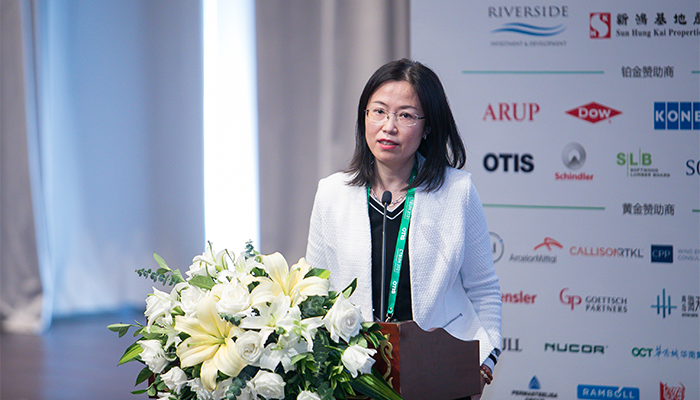
Jessica Zhao, Director of CML Applied Product Marketing & Communications in North Asia for Carrier HVAC, believes that the renovation of existing high-rise buildings must be safe and stable. While moving towards the future trend of smart, green, low-carbon, and healthy human settlements, goals must be achieved to stabilize operating costs, improve indoor air quality, and enhance personal health.
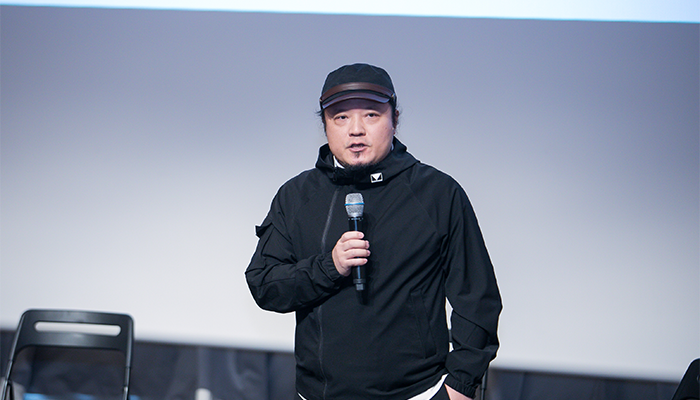
The Executive Director and Chief Designer of CTG City Group, Xiangdong Pan, expressed that culture, commerce, and technology are the three major elements of future design. He believed that architecture must be built with these three elements to allow innovation to continue. He added that the CTG three-dimensional project management system can help control and monitor the quality of a project.

Session 4—Design for Healthy and Livable Cities

Chunchao Li, the Marketing Director of Tianjin North Glass Industrial Technology, chaired the fourth session titled, “Design for Healthy and Livable Cities.”

A Principal and Design Director at Gensler, Hasan Syed, and Shimao Group’s Senior Design Director, Zhang Weiwei, gave a presentation entitled, "How to Reshape the Future Vertical City in the Oriental Context." During their presentation, Hasan and Zhang analyzed the relationship between high-rise buildings and the urban environment, the public space, the cultural narration, and other elements. They explained these relationships from the perspective of integrated development, design, and management. They argued that supertall, high-rise buildings are not finished, but are an ongoing construction. They believed that the sustainable city seeks solutions that balance rapid urbanization and a better life.
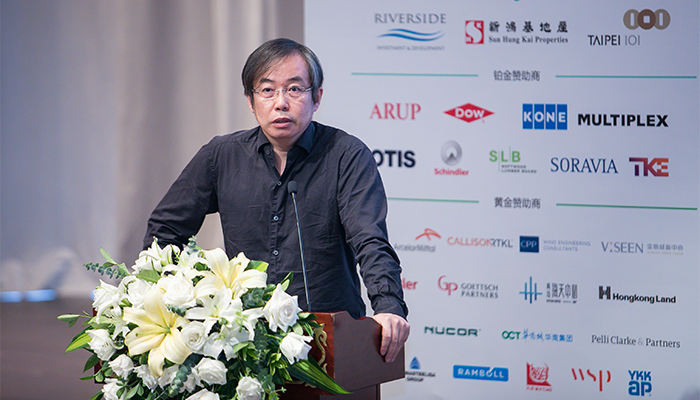
Vice President and Chief Architect at Tongji Architectural Design (Group), Lizhi Ren, presented on "Humanized Spatial Narrative of Vertical Cities." Lizhi shared the designs of high-rise buildings such as the African Union Headquarters, Shanghai Tower, SUNAC A-ONE, and Huamu Lot 1. Lizhi explained how these projects expressed the humanized spatial narrative using public art and urban culture while thinking about the internal connection between environmental health and place vitality.
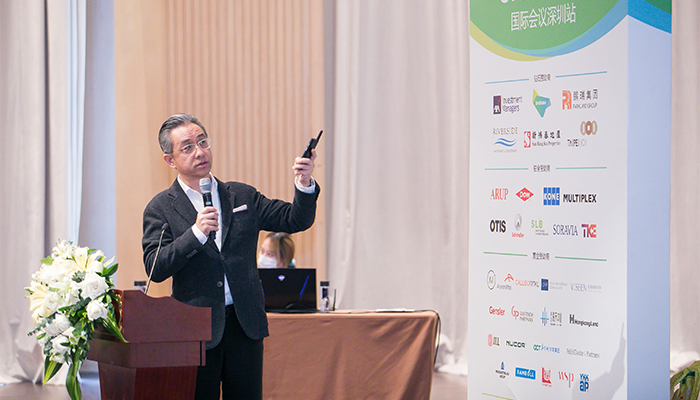
Goettsch Partners’ President & Co-CEO, James Zheng, gave a presentation called, “Qianhai Rising: Contributions From Urban Mixed-Use Developments." James defined a healthy and livable city through three aspects: physical health, environmental health, and mental health. James illustrated these three aspects by describing several case projects including China Resources Qianhai Center, COFCO Qianhai Asia Pacific Headquarters, and China Horoy Qianhai Guanze Mixed-Use Development.
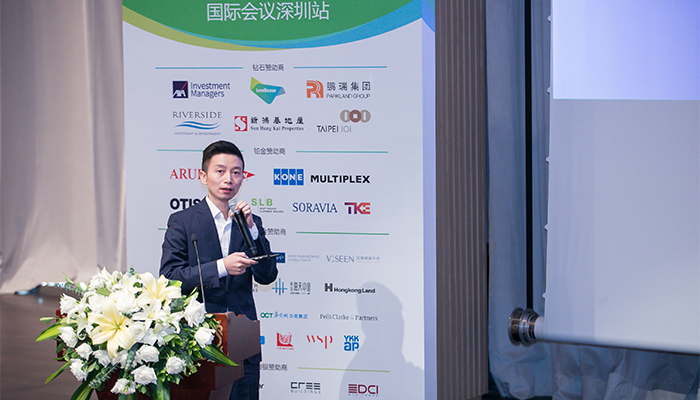
The Deputy General Manager of Office Building Department at Gemdale, Zhang Wei, presented on, "Gemdale Viseen Center Extraordinary Space Power." Zhang expressed that architecture and symbolic communion should lead the city. He explained that Shenzhen Gemdale Viseen is guided by a technology-led project work model to expound the considerations of independent space, flexibility, efficiency, green-design, occupant's health, and multiple interactions in modern office space.

Zhenming Li, Senior Vice President of Large Projects and Key Account Management at Schindler, gave a presentation titled, "Schindler PORT 4D – An Enabler of Essential Urban Reconfiguration." He introduced the Schindler PORT 4D elevator which allows multiple independent building functions to be undertaken by the same elevator at once. This provides a necessary adaptation to the building of the future by having user movement seamlessly integrated into an overall system through elements such as access, guidance, and security.
Session 5—Climate-Responsive Design for Tall Buildings
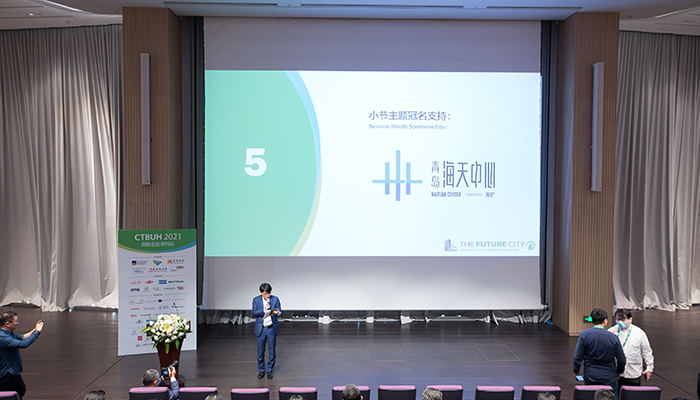
The Vice President of CCDI Group, Lang Wang, was session chair for the fifth section. He started the session off with a presentation titled, “Climate-Responsive Design for Tall Buildings.”
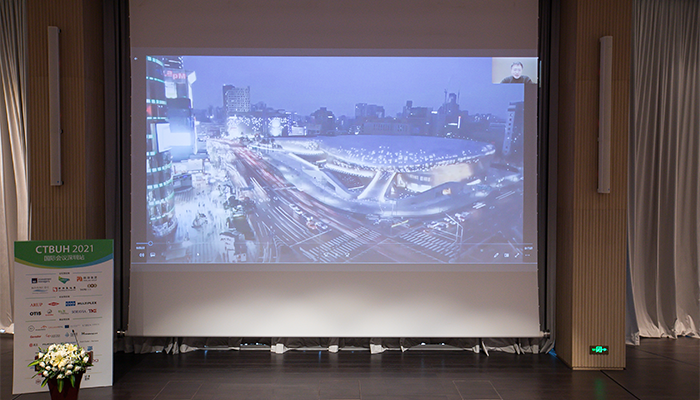
Satoshi Ohashi is a Director at Zaha Hadid Architects. His presentation was titled, "Responsive Environments— Inspiration, Incubation, Innovation." The video Satoshi shared explored the many possibilities for the creation and design of urban high-rise buildings in the context of urban ecological environment. He showed multiple project practices and customized different sustainable strategic plans for different projects to create a design concept for green building.
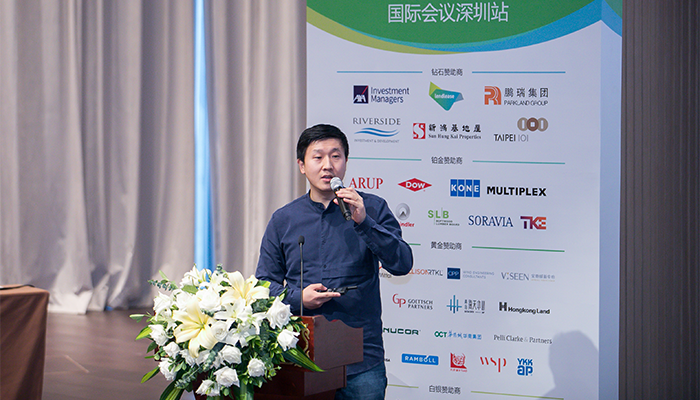
Boeri Architects’ China Partner, Xu Yibo, presented "Carbon Neutrality: Carbon Emission Peak and Ecological Diversity Practices in Future Cities." Yibo showed numerous examples of the company’s vertical forest towers including Nanjing Towers and Trudo Vertical Forest. With these projects, the company hopes to improve the city's natural environment, increase biodiversity, and contribute to the realization of the national double-carbon goal.
Session 6—Panel Discussion on the Design and Construction of Low Carbon & Smart Cities
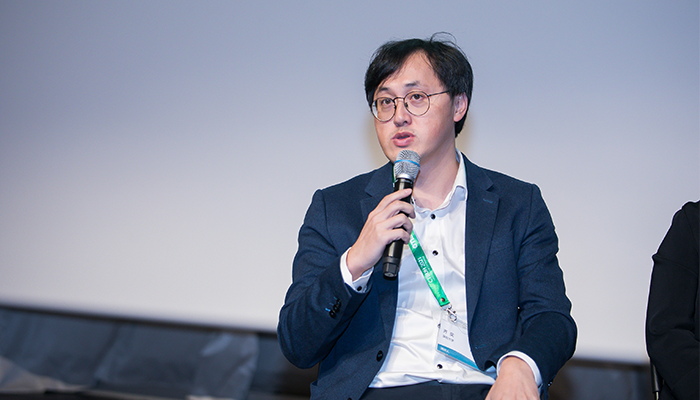
Qi Yi, the Deputy Dean of the School of Architecture and Urban Planning at Shenzhen University, presided over the panel discussion and shared ideas for the design and construction of low-carbon and smart cities.
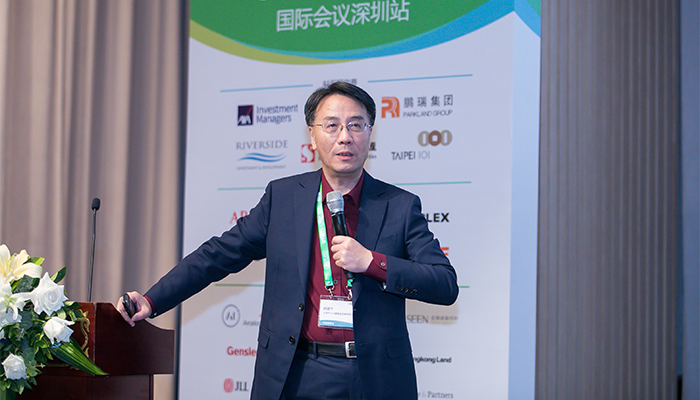
The General Manager of Shanghai Tower Construction and Development, Jianping Gu, shared the low-carbon digital operation and management of Shanghai Tower. Aligning with the 14th Five-Year Plan, the project strives to reduce the average annual energy consumption of public areas by three to five percent. At the same time, the project uses a digital platform to solve the industry pain points in the field of smart construction.

Richard (Mu) Li, the General Manager of Design Management at Ping An Real Estate, introduced the company’s green investment. He explained how their projects were designed with green construction concepts, construction technology, and operation technology. In addition, the concept of sustainable development was fully integrated into their projects' full life cycle.

Josephine Zhou, Director of Major Projects & Strategic Accounts Management at Otis, introduced Otis’ AI dispatch, which can predict demand, make decisions through machine learning, and adjust dispatch configuration at any time to optimize benefits.

Other Wonderful Moments
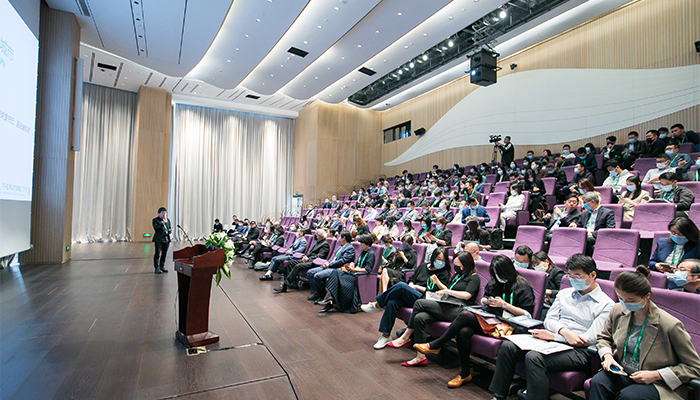

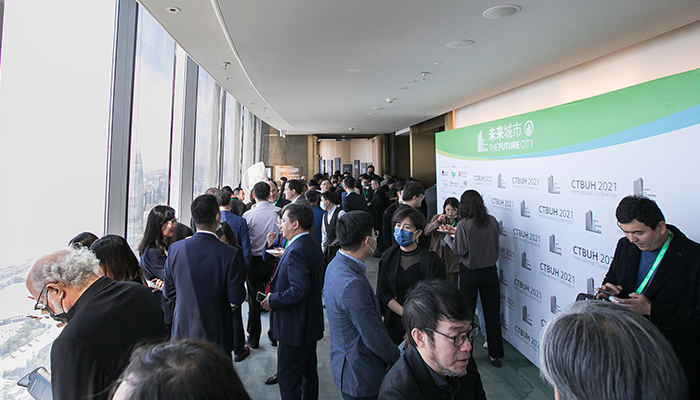
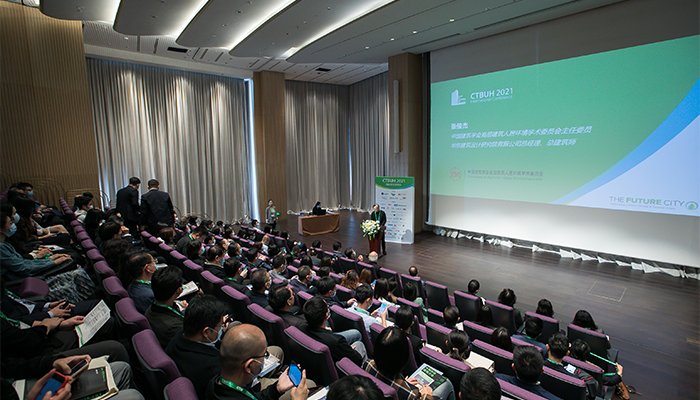

Get the Latest News and Updates from CTBUH
Fields with an asterisk (*) next to them are required.
View our privacy policy
